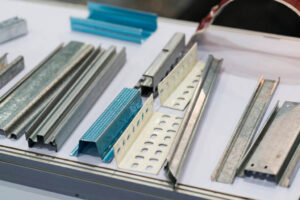Reaming is one of the finishing methods of holes and is widely used in production. For smaller holes, reaming is a more economical and practical precision machining method than internal grinding and fine boring.
In this article, we’ll walk you through the basic concepts of drilling and how it works.
Basic concepts of drilling
In general, drilling refers to a processing method in which a drill bit is used to process holes on a product display. Generally speaking, when drilling a product on a drilling machine, the drill bit should complete two movements synchronously:
①Main motion, that is, the rotational motion of the drill bit around the axis (cutting motion);
②Secondary movement, that is, the linear movement of the drill bit against the workpiece along the axis (feed movement).
When drilling, due to the defects in the structure of the drill bit, it will leave traces on the processed parts of the product, affecting the processing quality of the workpiece, and the processing accuracy is generally below IT10 level, and the surface roughness is about Ra12.5μm, which belongs to the rough processing category. .
The operation process of drilling
draw a line
Before drilling, first understand the requirements of the drawing. According to the basic standard requirements of drilling, use tools to draw the center line of the hole position. The center line must be clear and accurate, and the thinner the better, use a vernier caliper or steel ruler after marking the line Take measurements.
Draw check box or check circle
After the line is marked and passed the inspection, an inspection square or inspection circle with the center line of the hole as the center of symmetry should be drawn as the inspection line during the test drilling, so as to check and correct the drilling orientation during drilling.
Proofing
After drawing the corresponding inspection square or inspection circle, you should make a sample punch carefully. Make a small point first, and measure several times in different directions of the cross center line to see if the punch is indeed punched on the intersection point of the cross center line, and then forcefully hit the sample punch straight, round, and big so that it can be accurately punched. Knife rest assured.
Clamping
Use a rag to clean the machine table, fixture surface, and workpiece datum surface, and then clamp the workpiece. The clamping is smooth and reliable according to the requirements, and it is convenient for query and measurement at any time. It is necessary to pay attention to the clamping method of the workpiece to prevent the workpiece from being deformed due to clamping.
Correct
After the workpiece is clamped, you cannot rush to the next step, and you should first perform alignment.
Alignment is divided into static alignment and dynamic alignment. The so-called static alignment refers to the alignment before the drilling machine is started, so that the center line of the drilling machine spindle and the intersection point of the workpiece cross line are aligned. This method is safe and convenient for beginners, and is relatively easy to grasp, but because it does not consider the swing of the drilling machine spindle Uncertain factors such as drilling accuracy is low. Dynamic alignment is performed after the drilling machine is started. During the alignment, some uncertain factors are taken into account, and the accuracy is relatively high.
Test drill
Trial drilling must be done before official drilling: the chisel edge of the drill bit is aligned with the center of the hole to drill a shallow pit, and then visually inspect whether the orientation of the shallow pit is correct, and it is necessary to continuously correct the deviation so that the shallow pit is coaxial with the inspection circle. If the violation is small, the workpiece can be pushed to the opposite direction of the violation while pulling out the drill to achieve gradual correction.
Drilling
Machining drilling is generally based on manual feed operation, and drilling can be carried out after the azimuth accuracy of the test drilling is required. When feeding manually, the feeding force should not bend the drill bit to avoid skewing the axis of the hole.
For holes with high drilling precision, we generally use the processing technology of drilling, reaming and reaming. After drilling the small hole in the first step, use a caliper to detect the error offset from the center of the bottom hole to the reference plane, and convert the position between the bottom hole and the ideal center through actual measurement. If the error is not greater than 0.10mm, then when reaming, Appropriately increase the top angle of the drill bit, weaken the automatic centering effect, and make compensation by properly pushing the workpiece in the positive direction and gradually increasing the diameter of the drill tip. If the error is greater than 0.10mm, use assorted round files to trim the two side walls of the bottom hole, and the trimmed part should be connected to the arc of the bottom hole with a smooth transition.
Hope the above content can help you!




